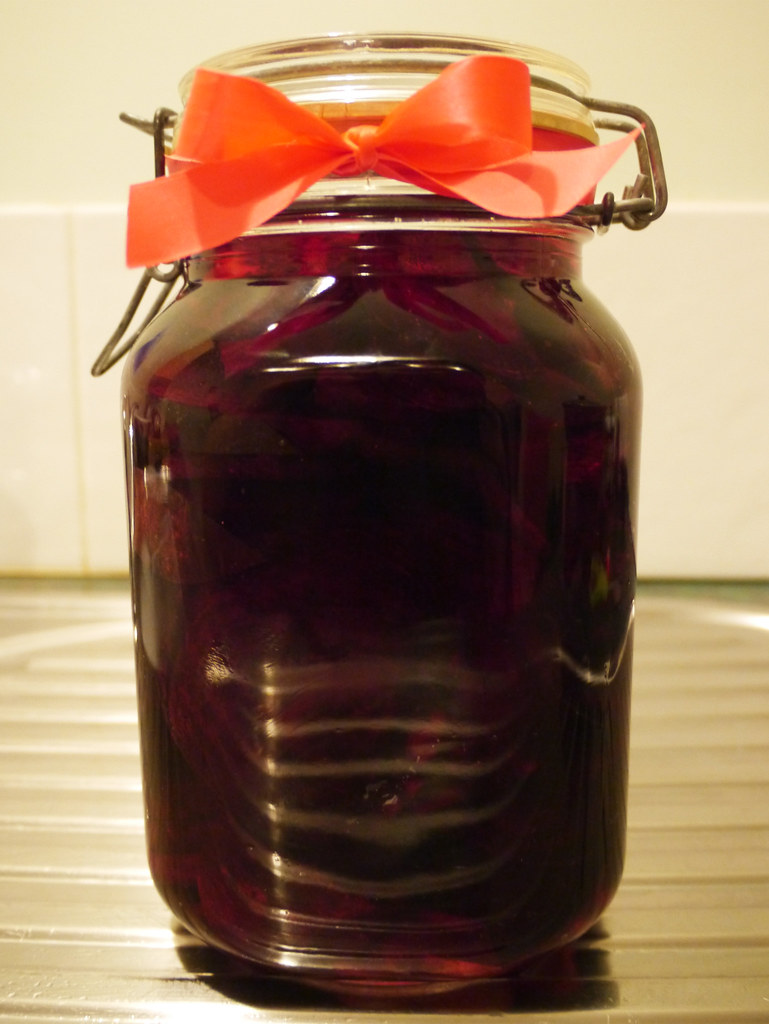
To be frank, I’m not a devout pickled beetroot fan, although my experience with them so far has only been the commercial tin varieties (whole and sliced), which I do enjoy eating but sometimes find just a little too extreme in flavour – either too sweet, too tangy, too salty or just a little too soft, or something. And like most things beetroot (soups, chips, juice, etc.), the incredible colour of pickled beetroot and its brining juice is the real winner to me.
I can’t think of many other fruits or veg with such an amazing deep red/purple colour intensity. Besides berries (blackberries, raspberries, mulberries, cherries, etc. [which I have a love-hate relationship with because they taste so damn delicious but are so very tough and persistent to remove if and when they stain – argh! {great fun as fake blood on Halloween though! smile }]) – beetroot would have to be one of the most wonderful natural sources of the deep red/purple/ruby colour. And be careful to not accidentally knock over a tin of beetroot and/or brine on the carpet (ahem – yes, that I’ve done) – for if you do, you’ll need to get down on your knees fast and scrub baby, scrub (and just pray that the cleaning gods are on your side!).((1))
And if you still want more colour and variety on your plate, beetroot also exist in white, yellow and ‘candy cane’ or ‘bullseye’. Pretty awesome, huh?!
Growing in the earth as a root veg like carrots, turnips, radishes and crew – beetroots are similar in appearance – a fleshy, bulbous sometimes gnarly-looking tuber with a firm, crunchy texture (and an edible foliage crown) making them a prized ingredient by cooks and chefs worldwide. Although not as popular as carrots (when was the last time you munched on beetroot sticks?), the unique colour, sweet flavour and many health benefits((2)) of beetroot make them a versatile and choice ingredient in recipes ranging from healthy vibrant fresh juices to delicious soups, pretty roasted gems to burgundy baked chips. Yummo!((3))
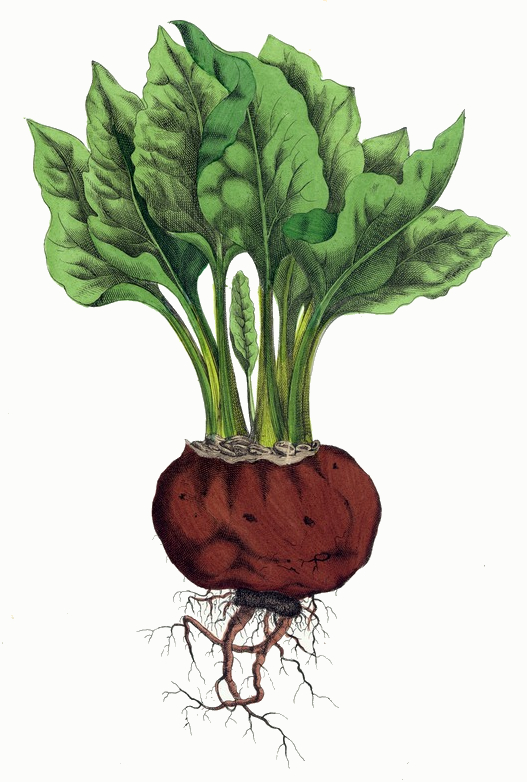
Beetroots are in season in Oz atm. Just a couple weeks ago, beetroot (loose and without leaves but still delicious nonetheless) were available at our local specialty fruit/veg market for 99 cents/kilo. We bought several kilos and juiced and souped them up to our heart and liver’s content. This week, seeing that (for some strange reason) it’s pickling season in our home, I decided to try my hand at home-pickling them with love, using the simple yet healthy method of lacto-fermentation.
I’m new to pickling beetroot and after researching online, I found several 2-in-1 recipes for both lacto-fermented pickled beetroot and beetroot kvass. I’m new to kvass also and in case you’re not familiar with it either, kvass is a lacto-fermented beverage of Russian and Ukrainian origin.((4)) Lacto-fermented vegetables, including beetroot kvass are rich in beneficial enzymes and probiotic bacteria which help promote healthy gut flora, and greater absorption of nutrients from your food.((5)) Thus, the following recipe is actually 4-in-1 – not only do you get pickled beetroot and beetroot kvass, they’re also delicious and good for your inner health. Quadruple win!
Referring to beetroot kvass, Sally Fallon in Nourishing Traditions states, ‘This drink is valuable for its medicinal qualities and as a digestive aid. Beets are just loaded with nutrients. One 4-ounce glass, morning and night, is an excellent blood tonic, promotes regularity, aids digestion, alkalizes the blood, cleanses the liver and is a good treatment for kidney stones and other ailments.'((6))
The following recipe is an adaptation of Salixisme’s Beet Kvass & Lacto-Fermented Beets recipe. Thank you very much Salixisme for sharing your great recipe! I’m really looking forward to tasting both the beetroot kvass and the pickled beetroot when they’re ready. I’ll keep you updated on how they turn out. Hopefully the jar does not explode or I accidentally drop it on the floor between now and then. Yikes!
Please Note: The beetroot in this recipe were pickled raw, hence they will be firmer and crispier/crunchier that store bought pickled beetroot. I’ve not tasted ‘raw’ pickled beetroot before and am quite intrigued to try them. This recipe is an experiment for me, and if the raw pickled beetroot taste too crunchy to eat, next time, I’ll consider quickly cooking (boiling or roasting) them first. I did not use ‘dechlorinated water’ as specified in Salixisme’s recipe. Instead, I used store bought spring water. Hopefully, it will still ferment ok. Like Salixisme, I did not use a starter or whey in the recipe, as suggested in other kvass/lacto-fermented beetroot recipes.((7)) Also, I added two star anise into the concoction because I love their flavour and fragrance and think/hope they’ll impart a delicious character to both the kvass and pickled beetroot. Hopefully, this is the case and they don’t interfere with the whole formula. Please pray with me.((8))
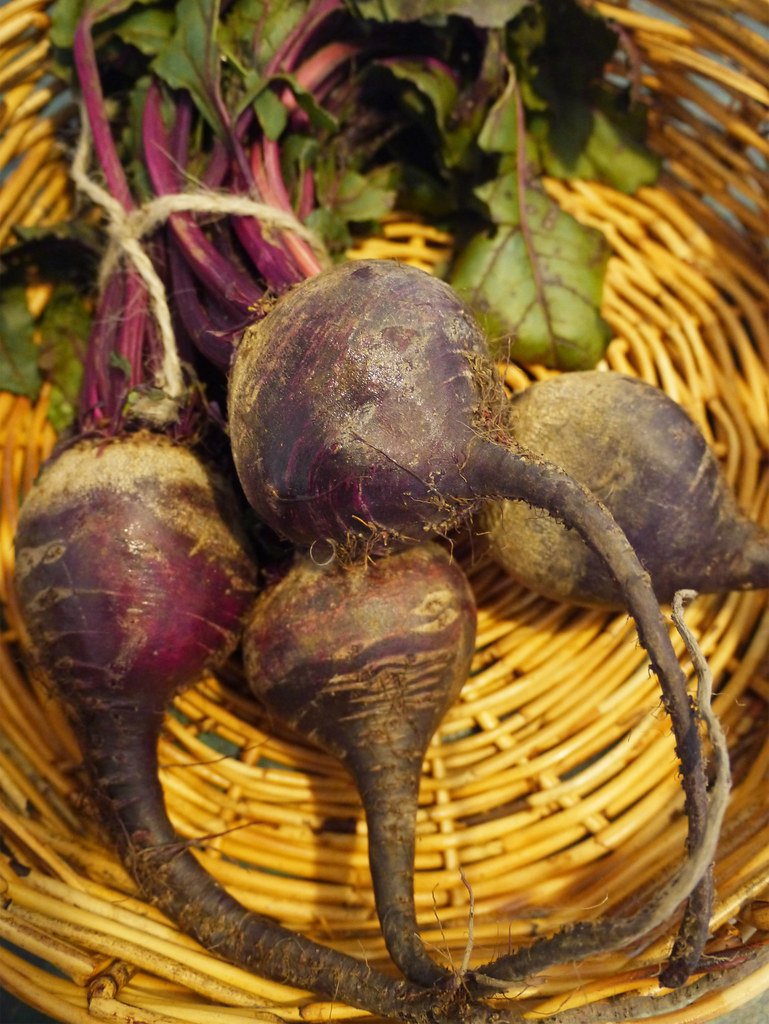

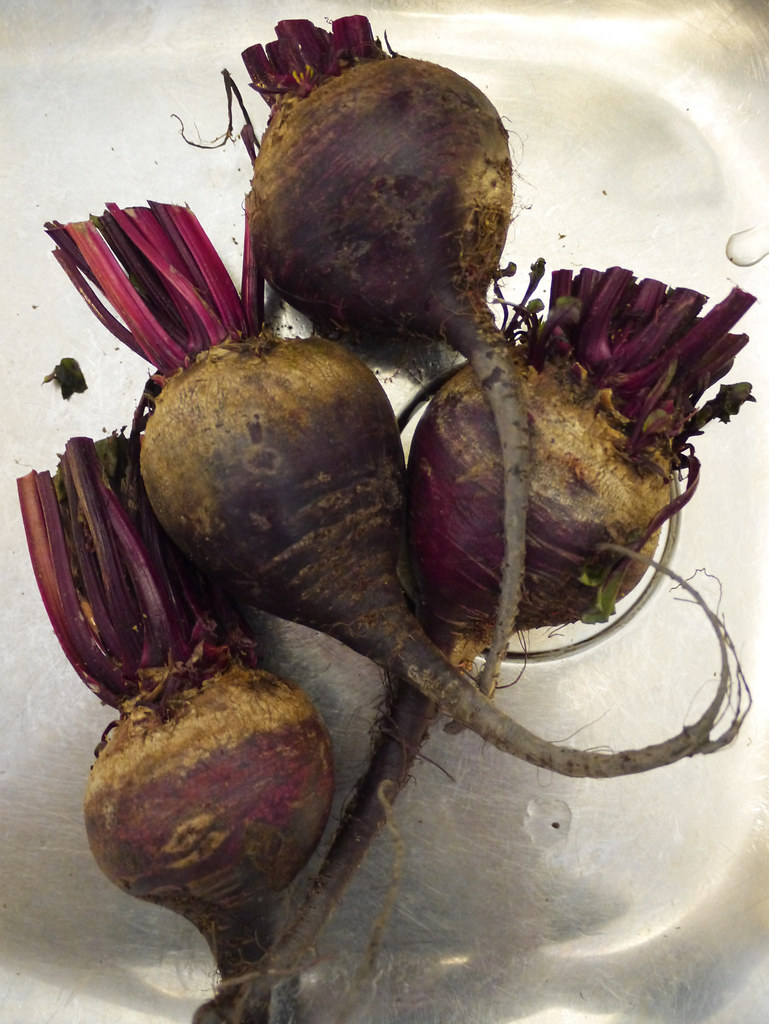
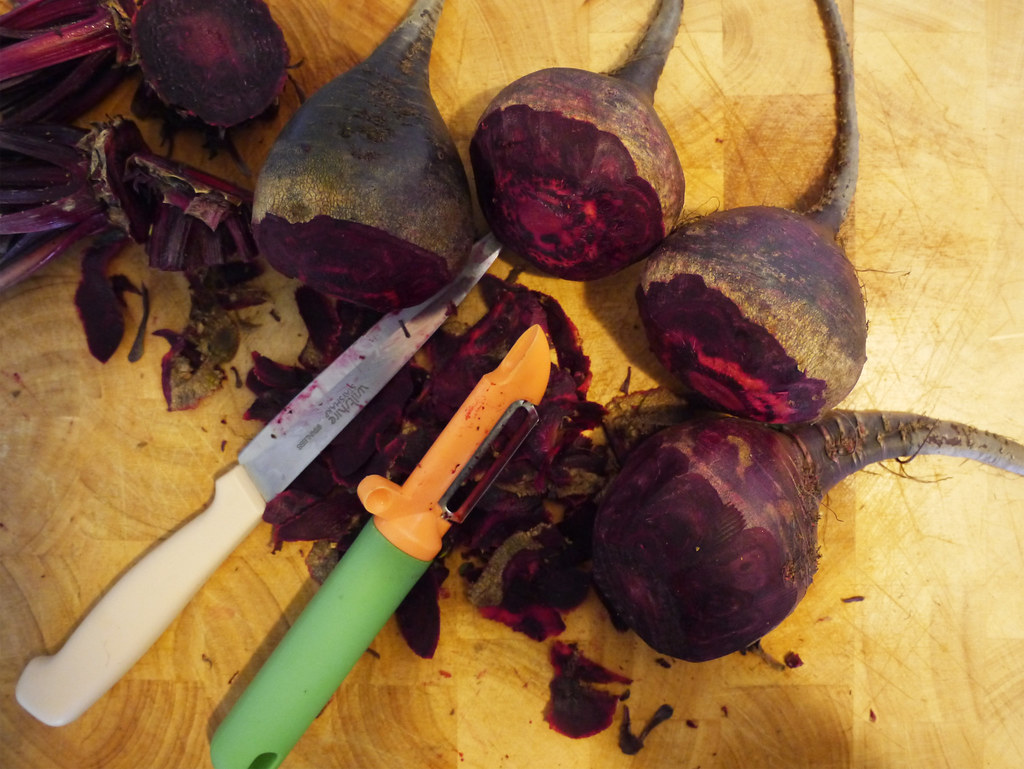
Wash and clean the beetroot very well. Peel and trim the beetroot if necessary.
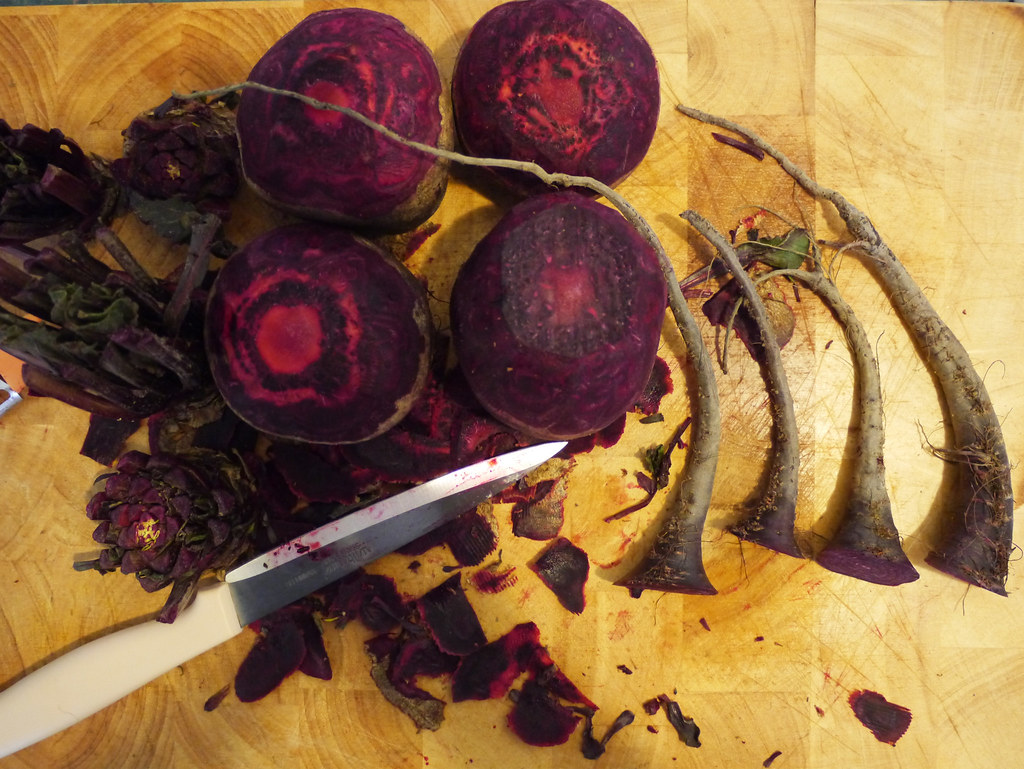

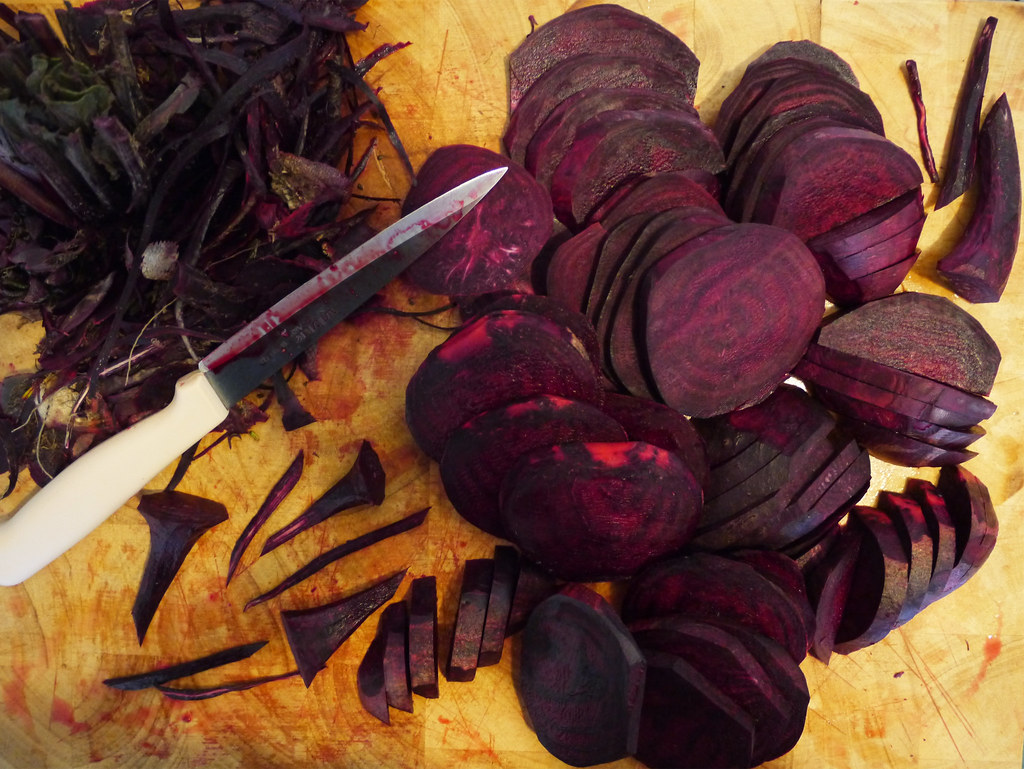
Cut the beetroot into 5mm thick slices. Be very careful of your fingers!!
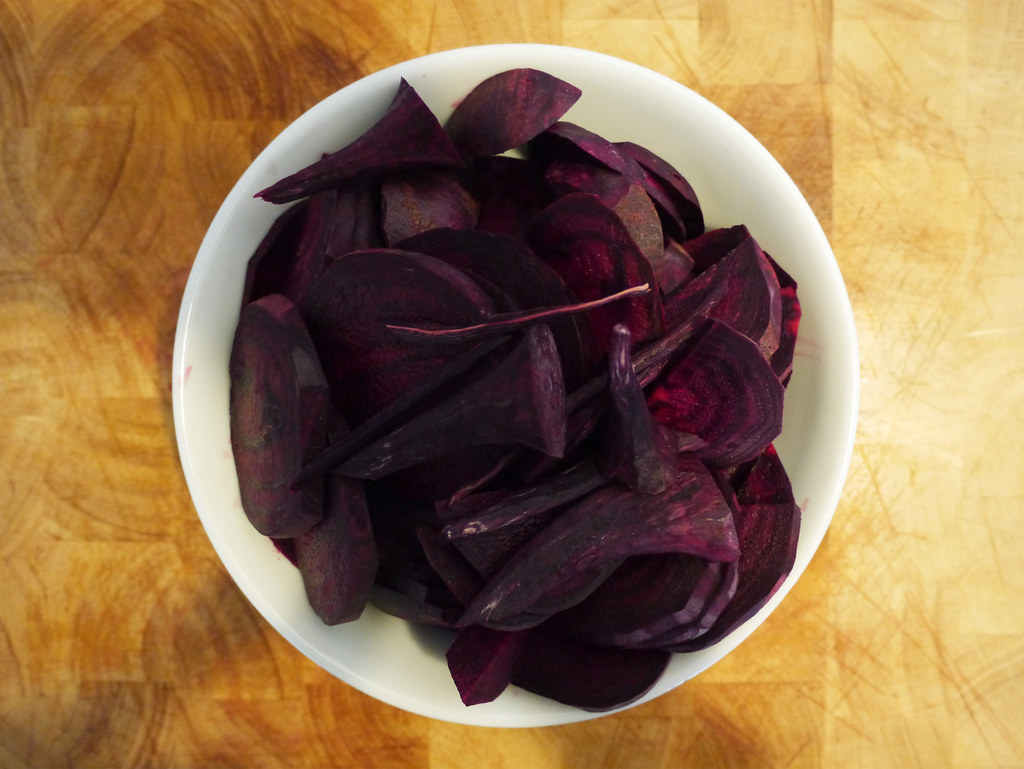
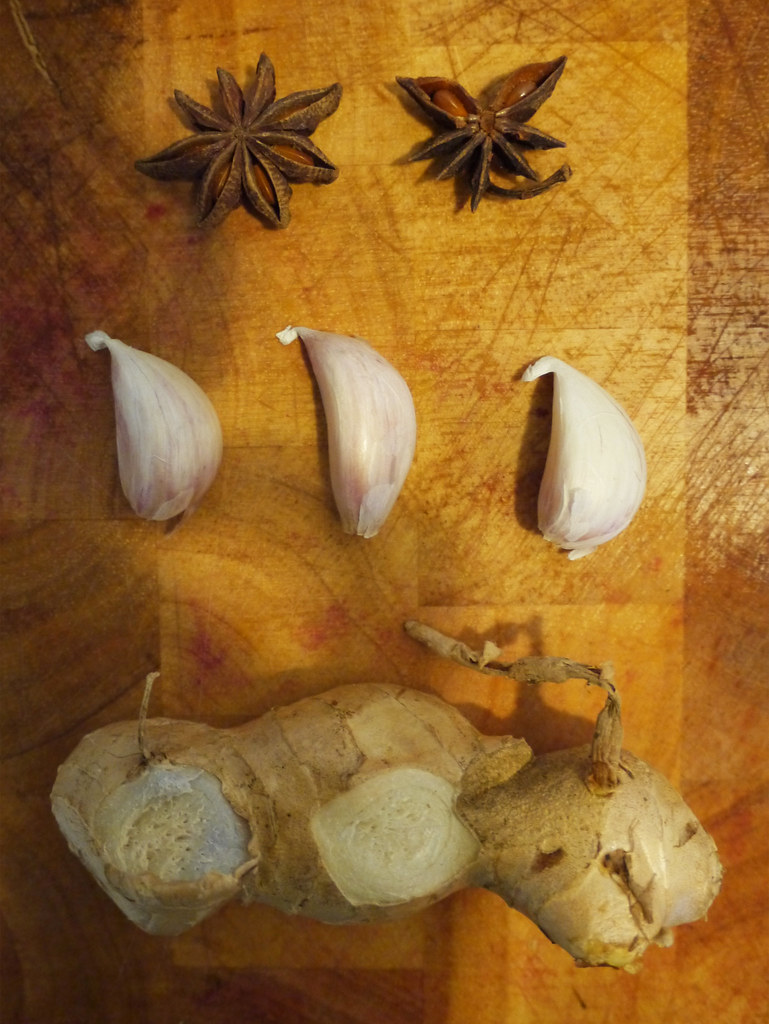
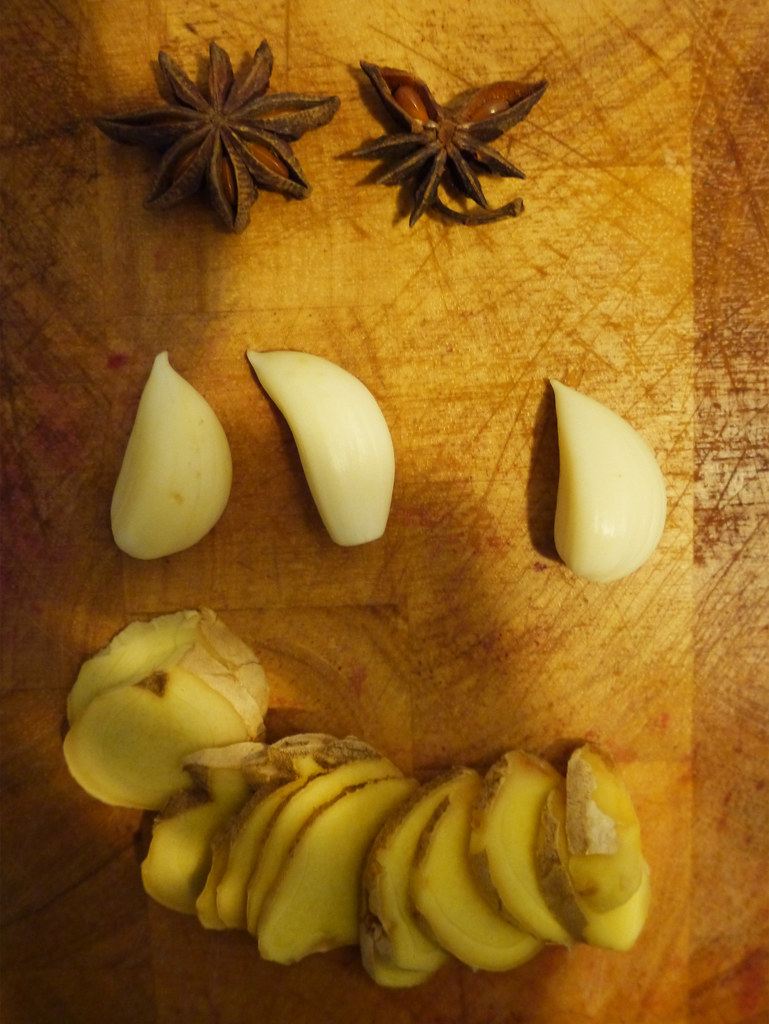
Peel and cut the root tip off the garlic cloves. Peel the ginger if necessary. Cut the ginger into thin slices.
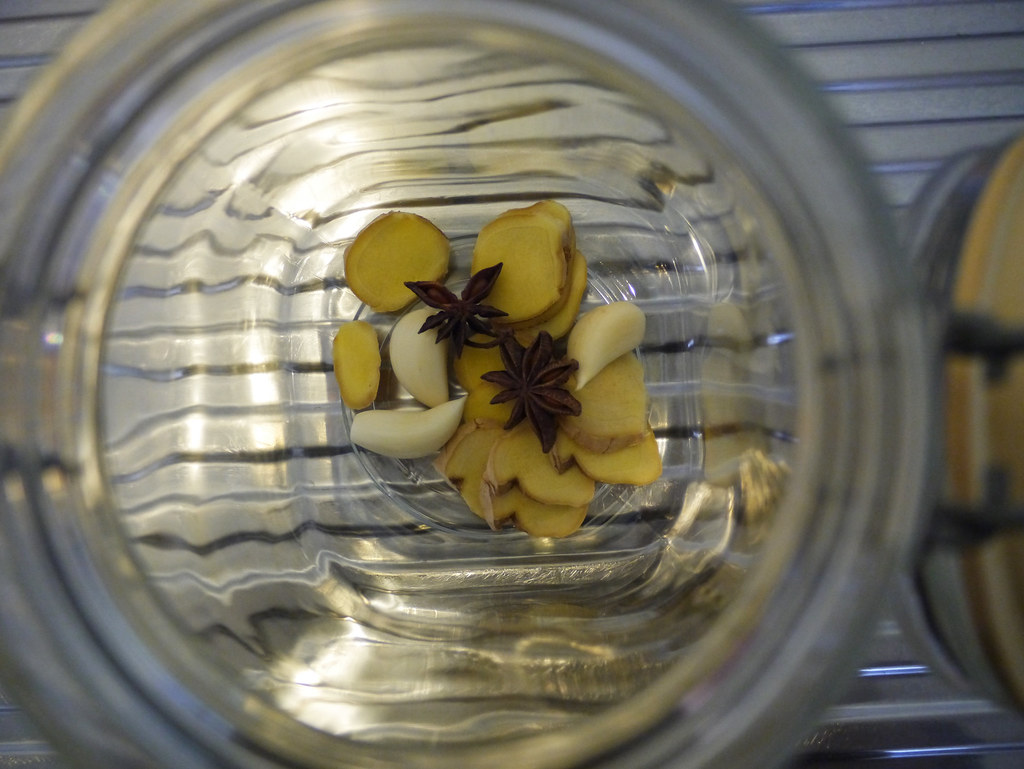
Place the garlic, ginger and star anise into the bottom of a sterilized glass jar.

Add the sliced beetroot.
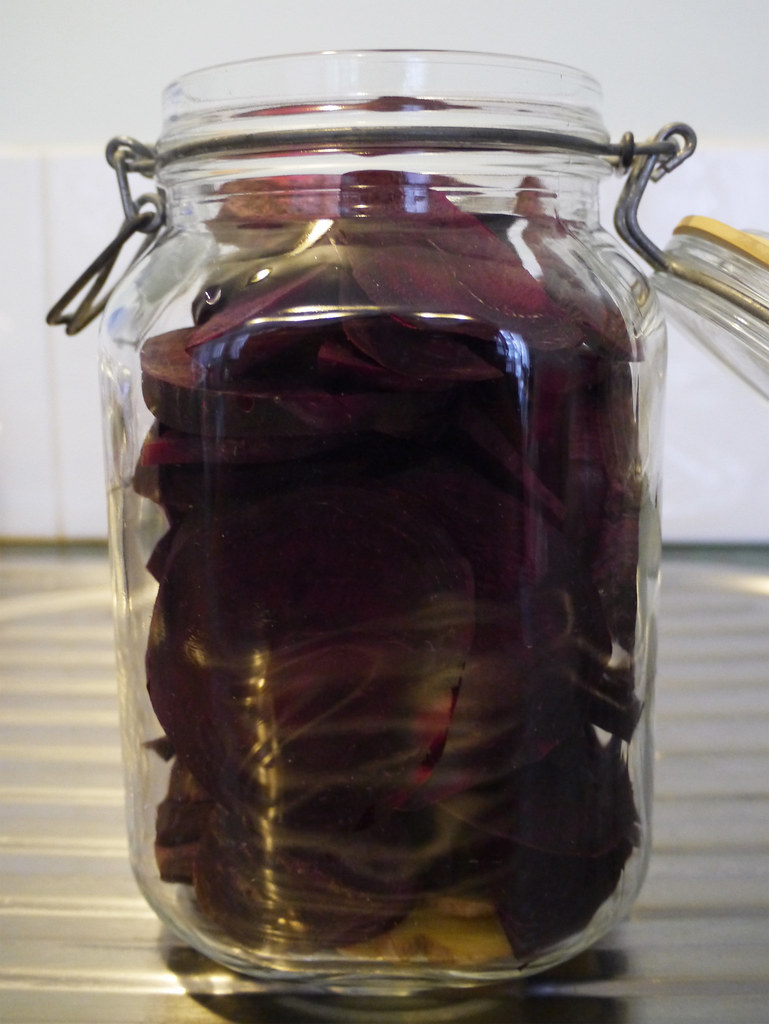
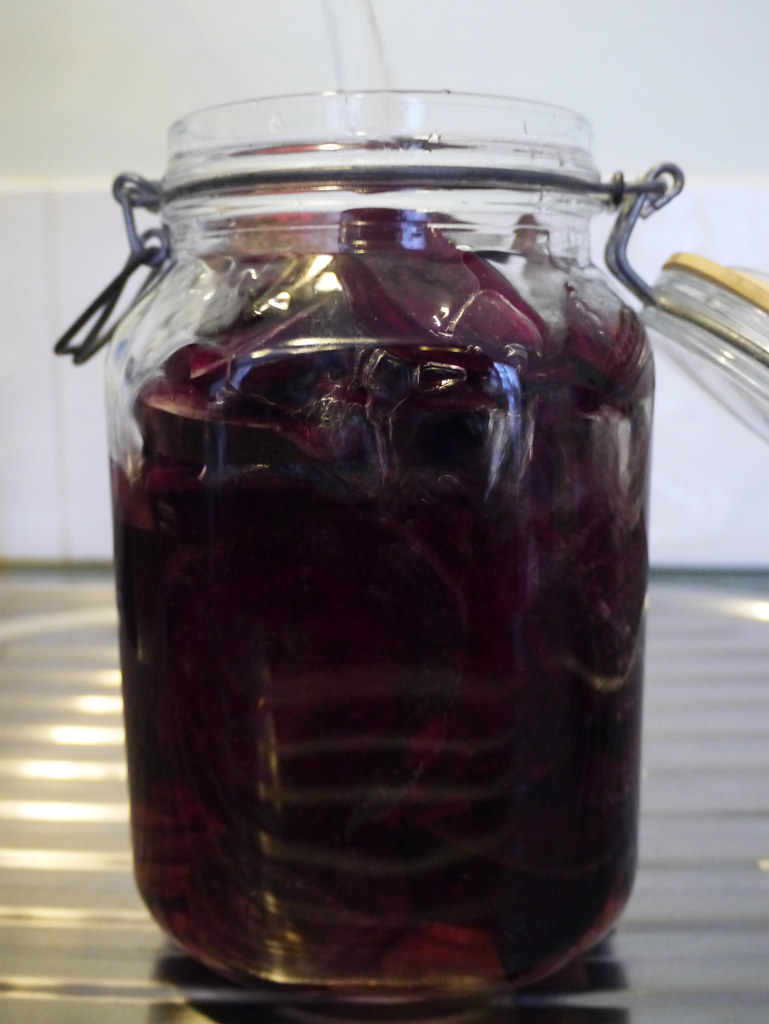
In a jug, mix the sea salt with the spring water until the sea salt is fully dissolved. Pour the brine solution into the jar to cover the beetroot.
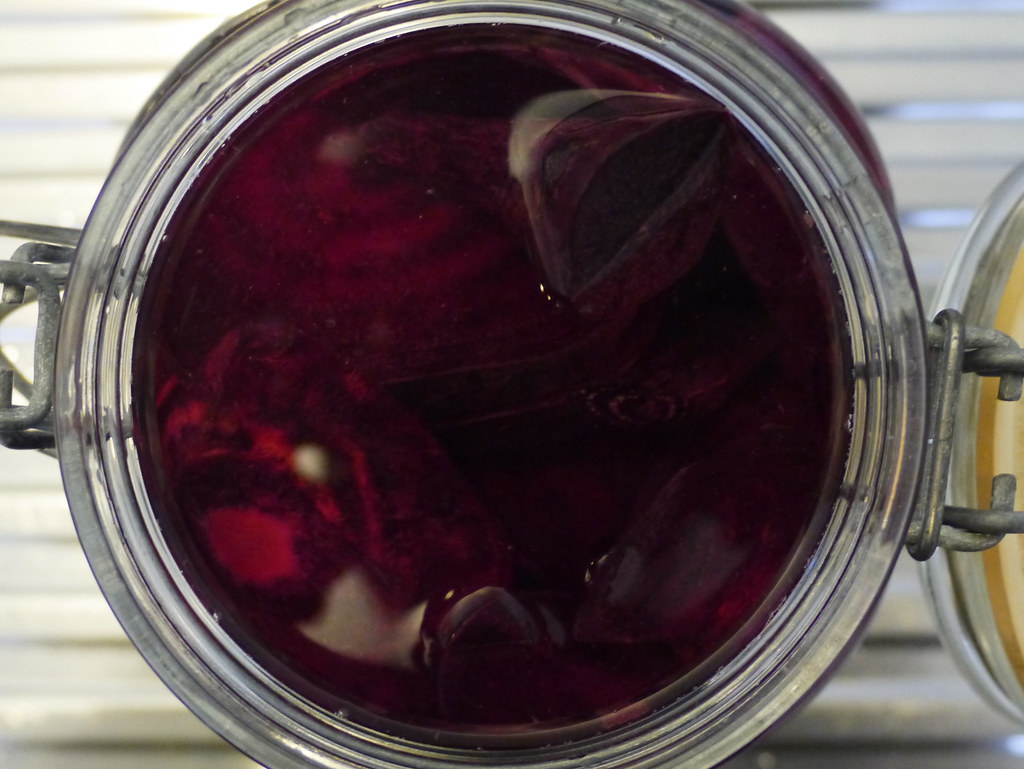
Leave about 3 cm space between the surface of the liquid and the top of the jar.
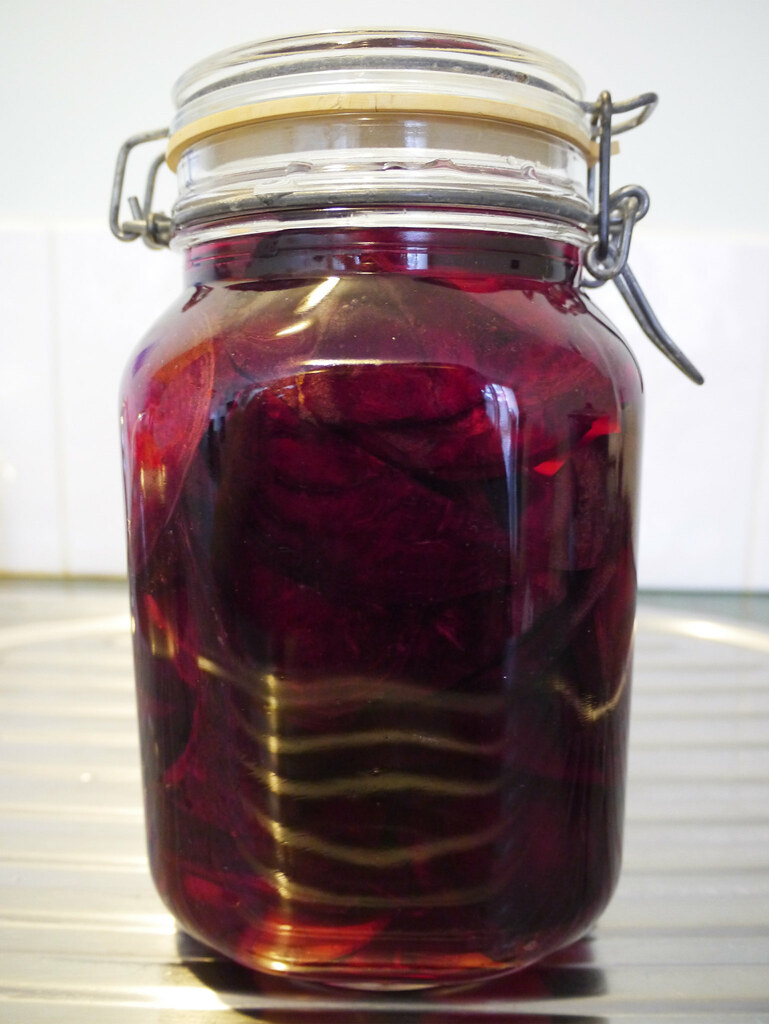
Replace the lid and seal tightly.
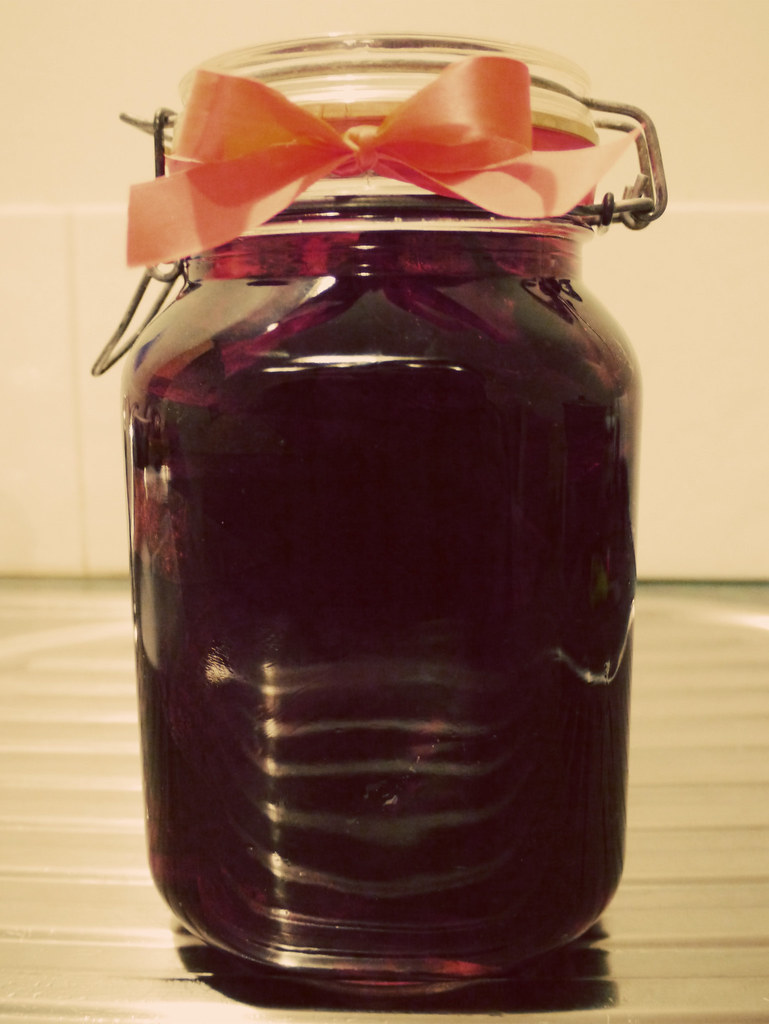
Store in a safe place at room temperature for 2-7 days. To your good inner health!smile
- 1 kg of beetroot (about 4 medium sized beetroots)
- 3 cloves of garlic
- 5 cm piece of ginger
- 2 star anise
- 1.5 Tbsp of sea salt
- 1.5 L of spring water
- Wash and clean the beetroot very well. Peel and trim the beetroot if necessary.
- Cut the beetroot into 5mm thick slices. Be very careful of your fingers!!
- Peel and cut the root tip off the garlic cloves. Peel the ginger if necessary. Cut the ginger into thin slices.
- Place the garlic, ginger and star anise into the bottom of a sterilized glass jar.
- Add the sliced beetroot.
- In a jug, mix the sea salt with the spring water until the sea salt is fully dissolved. Pour the brine solution into the jar to cover the beetroot.
- Leave about 3 cm space between the surface of the liquid and the top of the jar.
- Replace the lid and seal tightly. Store in a safe place at room temperature for 2-7 days. To your good inner health!smile
Update 05/09/14:
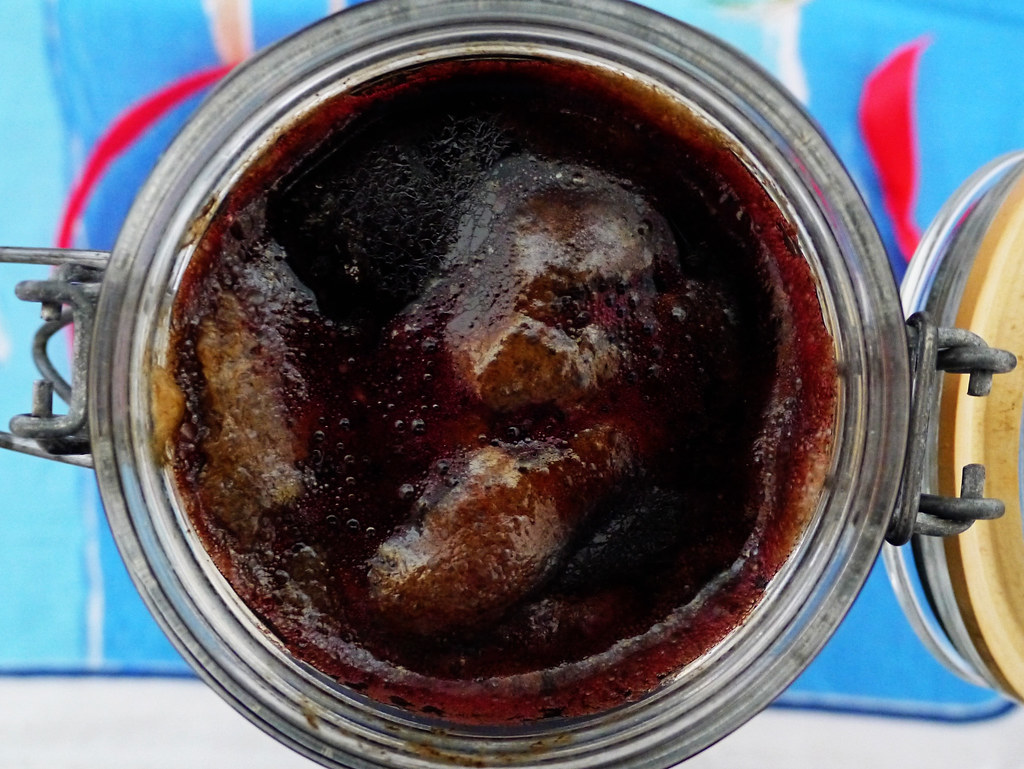
Lacto-fermented pickled beetroot/beetroot kvass #2
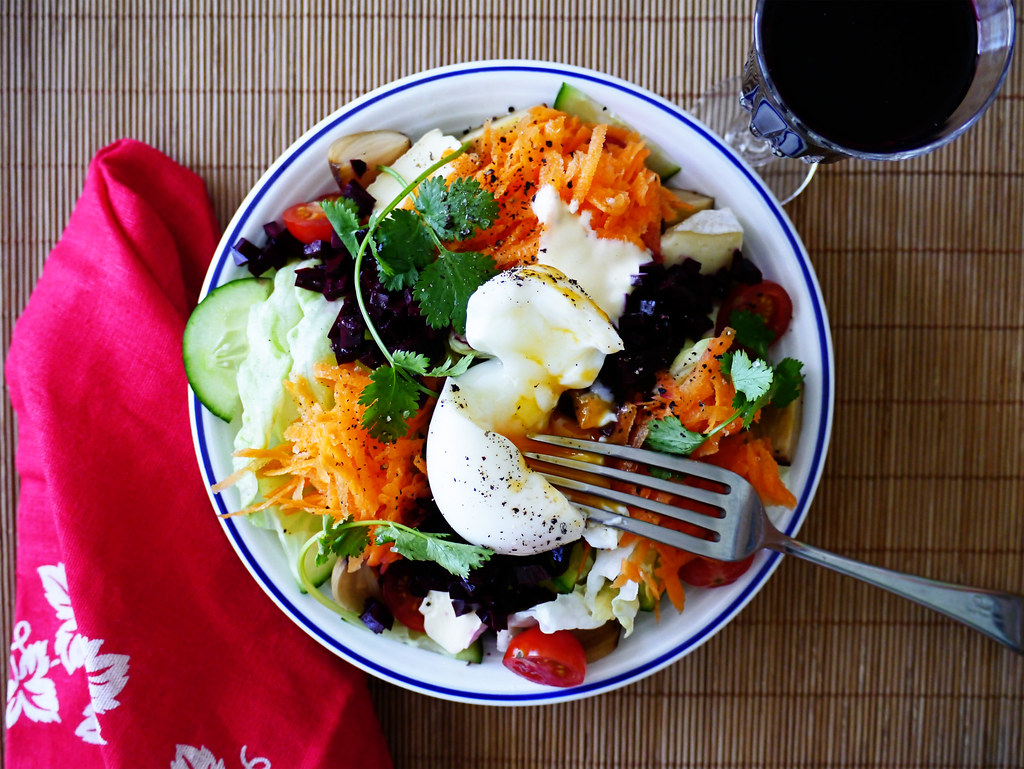
This simple salad is made of iceberg lettuce, cherry toms, sliced cucumber, coriander, brie cheese, pickled onions, soft boiled egg, mayo, grated carrot and diced homemade pickled beetroot by yours truly (oh, and a pinch of sea salt and cracked black pepper, of course). bigsmile If you like, you can also make a dressing for the salad with the beetroot kvass. The salad was served with a cold and refreshing sherry glass of beetroot kvass. Yumm!!
[[1]]If you happen to spill beetroot juice, here are some tips on how to remove beetroot stain: http://www.goodhousekeeping.com/home/stain-buster/stains-beets-may07.[[1]]
[[2]]Beetroot juice is a potent natural source of Nitrate. It is also high in iron, Betanin, Vitamins A and C, and high in calcium. It also contains folic acid, protein, manganese, potassium and fibre. The health benefits of drinking beetroot juice include improved memory, reduced blood pressure, increased energy and stamina, and aid in healing wounds and burns. Beetroot juice has also been reported to assist with skin problems, circulatory disorders, jaundice, anemia, increasing stamina, strengthening the body and cleaning the liver and kidneys. It can enhance metabolism, sexual performance, reduce insomnia and tiredness. The pigment in beetroot, Betanin, which gives it its rich purple colour, may assist in preventing cancer. Reference: http://www.naturesgoodness.com.au/beetroot-research.html.[[2]]
[[3]]And there’s many more ways to enjoy them I’m sure – please share your favourite beetroot recipes with me![[3]]
[[4]]Reference: http://en.wikipedia.org/wiki/Kvass[[4]]
[[5]]Reference: http://salixisme.wordpress.com/2014/07/04/beet-kvass-lacto-fermented-beets/.[[5]]
[[6]]Quoted from Salixisme – Paleo Living.[[6]]
[[7]]One beetroot kvass recipe that uses whey can be found here: http://thenourishingcook.com/how-to-make-fermented-beet-kvass/.[[7]]
[[8]]The beetroot watercolour illustration in this post was obtained from ReusableArt.com and is ‘copyright free and in the public domain anywhere that extends copyrights 70 years after death or at least 120 years after publication when the original illustrator is unknown’. By the way, is it just me or does that illustrated beetroot look a little grumpy?[[8]]
I really love that you post such interesting recipes. It’s so refreshing, and I get new ideas which is what it’s all about! I’m just starting to get into pickling, though I don’t have a jar large enough for this recipe so I’ll have to go pick some up! Thanks for sharing!!
Hi nagimaehashi,
Thanks for your comment! Lacto-fermented beets/beetroot and beet kvass are new to me so this is an experiment and I can’t wait to taste them when they’re ready. I do enjoy some of the more unusual recipes/foods although I love popular comfort foods too. I’m glad you’re getting new ideas from the posts. Speaking of ideas and inspiration, your site is a treasure trove of wonderful and delicious ideas! Home pickling is so much fun and good for you too, especially lacto-fermented pickles. Small or medium sized recycled coffee or jam jars work just fine if not better because they can be stored in the fridge easier when the pickles are ready. How exciting! I can’t wait to see your beautiful pickle creations and photos. Please let me know when you make them. Best wishes! :)
You got me intrigued, too, Padaek! It’s good to make two recipes in one go.
Julie
Gourmet Getaways
Hi Julie,
Thanks for your comment. Crunchy raw pickled beetroot sounds delicious and I can’t wait to try them. Salixisme suggested that the pickled beetroot can be used in salads or just eaten as a snack. Sounds good to me. And the kvass sounds delicious/interesting too. Love 2-in-1 recipes and 2-for-1 deals. Best wishes! :)
Great recipe for beetroot, this is a way I like to eat them. I also don’t use them much due to the mess factor except for roasting them then taking the skins off afterwards.
Hi Jem,
Thanks for your comment. This recipe looks promising and I can’t wait to try both the kvass and beetroot. The liquid is starting to show bubbles in it and on the surface. I’m excited. Beetroots are pretty amazing/special veg – tasty and full of health benefits. Their intense colour is unbelievable and make a great dye. Love roasted beets too. Yum! :)
I have a jar of local and organic pickled beetroot and they were pretty tasty, not too tangy or sweet or salty at all, just mostly natural and reddish. They do have a lovely reddish color, do they? I bet the golden beetroot looks unique, too! Stunning step by step photos, star anise…mmmm! This could have been a beetroot kombucha if you used vinegar :)
Hi Rika,
Thanks very much for your comments. I’m looking forward to trying these and hopefully the beetroot will be the right texture. Otherwise, I’ll adjust the recipe/instructions a little. Now, the jar has many bubbles in it as well as on the top and the colour of the liquid is a lot deeper. I”ll let it burp tomorrow. Would be great to try this recipe with other types/colours of beets. Thanks for your kind words, I appreciate it. Yes, star anise was my twist and I love it. I did not know that about being able to turn it into kombucha if I used vinegar. Thanks! Strangely enough, as I read you comment, I was in the process of writing my post for making a kombucha SCOBY. So awesome! I’m posting it tomorrow. Thanks Rika. Best wishes! :)